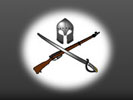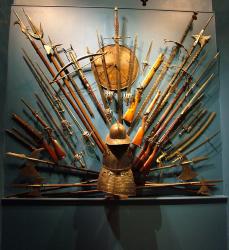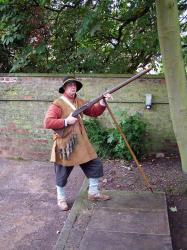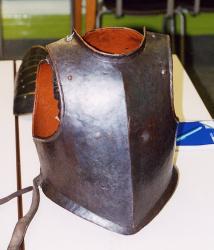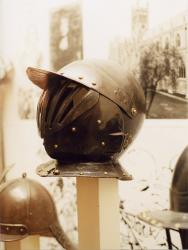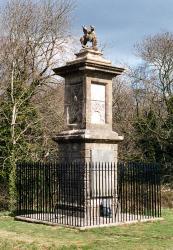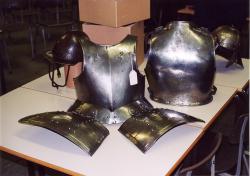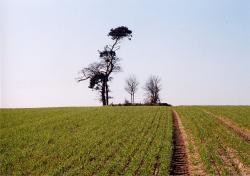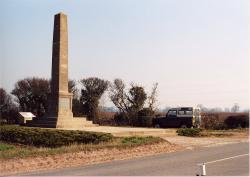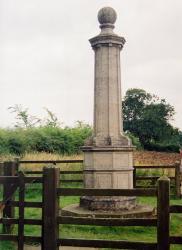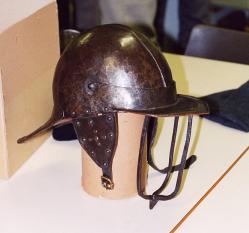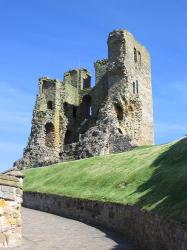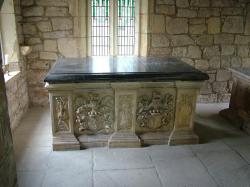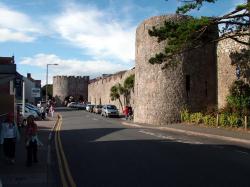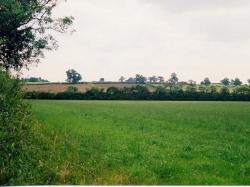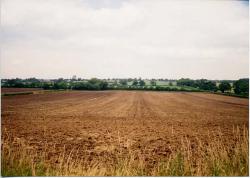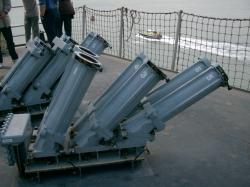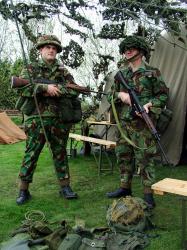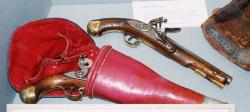Translate this Page
Recent images :
- International Harvester M5 halftrack
- Dassault Mystère Mk IVa number 146
- Ark Royal, Anti-ship missile defence gun.
- RAF Series 2 Land Rover
- Lightweight, air portable Land Rover
- Daimler Ferret Mk 1/2 Armoured Car
- RAF Mountain Rescue Series 3 Land Rover
- French Bronze 6 pounder cannon
- Farsley South African War Memorial
- Farsley War memorial
The 17th Century
Click on the entry for a larger image and details, or click to go back to the previous index
A elegant display of arrayed weaponry from medieval polearms and 2-handed swords through to 19th century percussion muskets and carbines. There are rapiers, basket-hilt broadswords, bayonets, halberds and a crossbow arranged around a 17th century (En...
Taken at the York Castle Museum, York, England, 2005
A member of the Tower Hamlets Trayned Band showing how a Civil War musketeer would have been armed. He has a matchlock musket of the period, with a rest, and the match (a piece of slow-burning fuse used to light the priming powder which in turn ignit...
Mill Mount, York, England. September 2004
A view of the hill itself from the track (now a road) in the vale between Lansdown Hill and Freezing Hill where the Royalists initially formed up. The woods to the right and left of the crest of the hill were there at the time, and Waller formed a de...
Lansdown Hill battlefield, near Bath, England. March 2003
A view south from the centre of the battlefield looking at the plateau at the top of the hill. This is where Waller and the Parliamentarians fell back to form a second line after the ferocious initial assult of the Cornishmen.
Lansdown Hill battlefield, near Bath, England. March 2003
This English breastplate and backplate from the mid 17th century illustrates the basic protection considered necessary for a soldier of horse of this period. The breastplate is musket-proof (see the small dent or proof mark just the the right of cent...
Taken at the York Castle Museum, York, England, 2003
A pair of full-face close helmets worn by cuirassiers during the English Civil War. The helmets would be part of an all-over plate armour similar to the later medieval knights except that the leg armour tended to be fully articulated and ended at the...
Taken at the York Castle Museum, York, England, 2003
A pikeman and a musketeer from the 17th century.
The pikeman in this picture actually holds a halberd, which would have been particularly effective against mounted opponents. He is also armed with a mortuary sword hanging to his left, and is protec...
Mill Mount, York, England. September 2004
A monument to the commander of the Cornish foot, Colonel Sir Bevile Grenvile, and the battle of Lansdown Hill (5th July 1643) positioned at the top of the hill (just off the present road) about the centre of the battlefield and approximately where he...
Lansdown Hill battlefield, near Bath, England. March 2003
A Pikeman's back and breastplate from around 1660 of the pattern used during the English Civil War. It also shows the hinged plates which would have covered the wearer's lower abdomen and upper leg area. Also the the left can be seen a Lobster helm a...
Taken at the York Castle Museum, York, England, 2003
The view north towards the Royalist position from 'Cromwells Plump', the highest point on the ridge where the Parliamentarian forces formed before the Battle of Marston Moor. The Royalist line formed in front of the tree line just below the horizon. ...
Marston Moor, between Tockwith and Long Marston, North Yorkshire, England. March 2003
The view looking south and south-west from the left of the Royalist position at the ridge where the Parliamentarians formed. The battlefield monument can just be seen in the haze, and Cromwell's plump on the ridgeline.
Marston Moor, between Tockwith and Long Marston, North Yorkshire, England. March 2003
The small clump of trees at the highest point of the ridge where the Parliamentarian forces lined up before the Battle of Marston Moor. It is thought to be where the Commanders surveyed the Royalist forces to decide their battle plan. Even though Lor...
Marston Moor, between Tockwith and Long Marston, North Yorkshire, England. March 2003
The monument to the Battle of Marston Moor, on the Tockwith to Long Marston road.
Marston Moor, between Tockwith and Long Marston, North Yorkshire, England. March 2003
A commemorative monument errected on the battlefield just north of Cromwell's position on Red Hill Ridge.
Naseby, Northamptonshire, August 2001
This three-barred pott helmet was worn by an harquebusier, a more modern type of cavalryman armoured just with a buff coat, back and breastplate and this type of helmet. It became known as a 'lobster pott' due to the plated rear neck protector and th...
Taken at the York Castle Museum, York, England, 2003
The first stone castle in Scarborough was built on the headland dominating the town and harbour around 1135 by William Le Gros, Earl of Albemarle. The current castle was built in the early 13th century and expanded later by King John and Henry III.
...
Scarborough, North Yorkshire. Summer 2004
The tomb and memorial to Sir Thomas Fairfax, one of the most prominent and skillful commanders of Parliamentary forces during the 1st English Civil War. He was a Yorkshireman, and is buried in his local church near York. A fine soldier, he was always...
Bilbrough Church near York, UK. July 2004
The impressive remains of Tenby's medieval city walls, which also protected the town and defied the Parliament's troops when Tenby was held for the King in May 1648 during the 2nd English Civil War.
Tenby, Pembrokeshire, Wales. August 2004
The battlefield of Naseby (14th Jue 1642) from the centre of the battlefield looking up towards the Parliamentarian position.
Naseby, Northamptonshire, August 2001
The Naseby battlefield. Looking fron the right of the Parliamentarian position where Cromwell formed his Ironsides over the battlefield to the ridge where the Kings troops formed.
Naseby, Northamptonshire, August 2001
